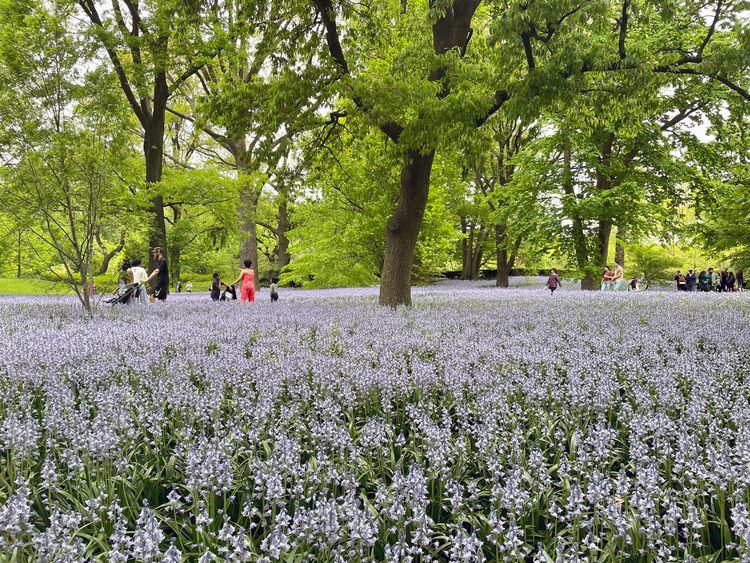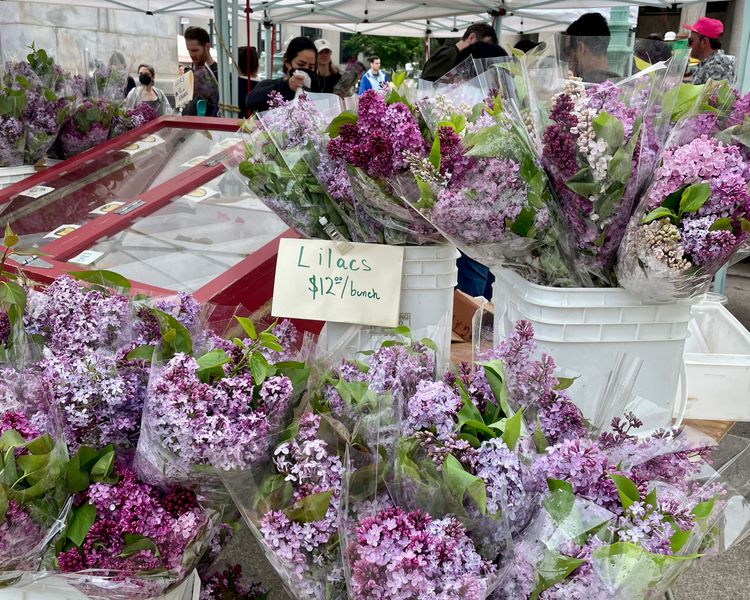Air Becomes Crisp, Pumpkins Appear

September has not yet run its course and already around New York City, there are round pops of orange anticipating the season of haunts. Pumpkins are appearing on stoops, balconies, and bodega storefronts and in the coming weeks, they will become more and more abundant until they reach a jubilant multitude. The cold may soon bring stillness and muted colors, but for now, it’s time to celebrate autumn and its fiery hues.
Pumpkins are native to North America and have long had a history in the area. They were domesticated thousands of years ago by Indigenous people to be sweeter. The whole pumpkin was used, from the seeds taken for medicine to dried pumpkins made into mats. The colonists were enthusiastic about the easy-to-grow pumpkins, heavily incorporating them into their diets. Adriaen van der Donck, who once lived near today’s Marketfield Street and Broad Street when Manhattan was part of Nieuw Amsterdam, wrote in his 1655 A Description of New Netherland about “the English, who are fond of tasty food, like pumpkins very much and use them also in pies, and know how to make a beverage from them.” The colonists consumed pumpkins in everything, from pumpkin ale to pumpkin stews, with van der Donck going on: “pumpkins grow with little or no cultivating. They are so sweet and dry that for the purpose of preparing them water and vinegar are added before stewing them in the same way as apples. And notwithstanding that it is here generally despised as a mean and unsubstantial article of food, it is there of so good a quality that our countrymen hold it in high estimation.”
So the pumpkin rose in esteem in both culinary traditions and then decor. The English, Scottish, and Irish who immigrated in the 19th century found that instead of the turnips they had usually carved with spooky faces around All Hallows’ Eve to ward off unsavory spirits (this vegetal “lantern” keeping away Stingy Jack who had the bad idea to drink and gamble with the devil), the pumpkin was an easily carvable substitute.
Centuries later, the pumpkin still abounds. You can visit a flotilla of floating pumpkins on the Harlem Meer in Central Park or stand in awe of pumpkins of gargantuan proportions at the New York Botanical Garden in the Bronx. Acquire your own pumpkin at a farmer’s market or local pumpkin patch; display it proudly on your kitchen table or front steps. Carve it with a ghastly visage or make it into a pie (get some “sharp apples” if you want to bake the 17th-century version). It is the season to revel in the final bounty of the waning warm weather and to engage in these rituals where your carving hand may follow the path of well-worn superstition, these threads of time linking us to people who were once here, and those who will come long after us.

- For the last 20 years, in conjunction with the Great Pumpkin Commonwealth (an organization “cultivating the hobby of growing giant pumpkins throughout the world”), the New York Botanical Garden has welcomed some of the nation’s largest pumpkins to its grounds. On October 22nd and 23rd this year, one may visit these cucurbit behemoths, many weighing in over a ton. According to the GPC, the world-record pumpkin hailed from Tuscany and tipped the scales at 2,702.9 lbs in 2021.
- If you’ve ever driven the Henry Hudson Parkway up the west side of Manhattan, you may have noticed the “Pumpkin House” cantilevered over a sheer drop. Built in 1925 and known originally as “The House On Stilts,” the building received its current nickname because its windows serve jack-o-lantern face when their warm light glows out into the night. One-time owner, interior designer William Wesley Spink, didn’t see it that way: “I guess if you’ve had enough Quaaludes, it might look like a pumpkin.”
- For over 20 years, a fence in Cobble Hill has been the site of an annual gruesome rite (for pumpkins): the Halloween Impalement. On a long spiked fence, over 100 small pumpkins are spiked and then left to decay into, as founder Jane Greengold states, “more and more expressive remnants of themselves.” The tradition took a pause during the pandemic, but we hope to see the ghastly gourd massacre return this year.




